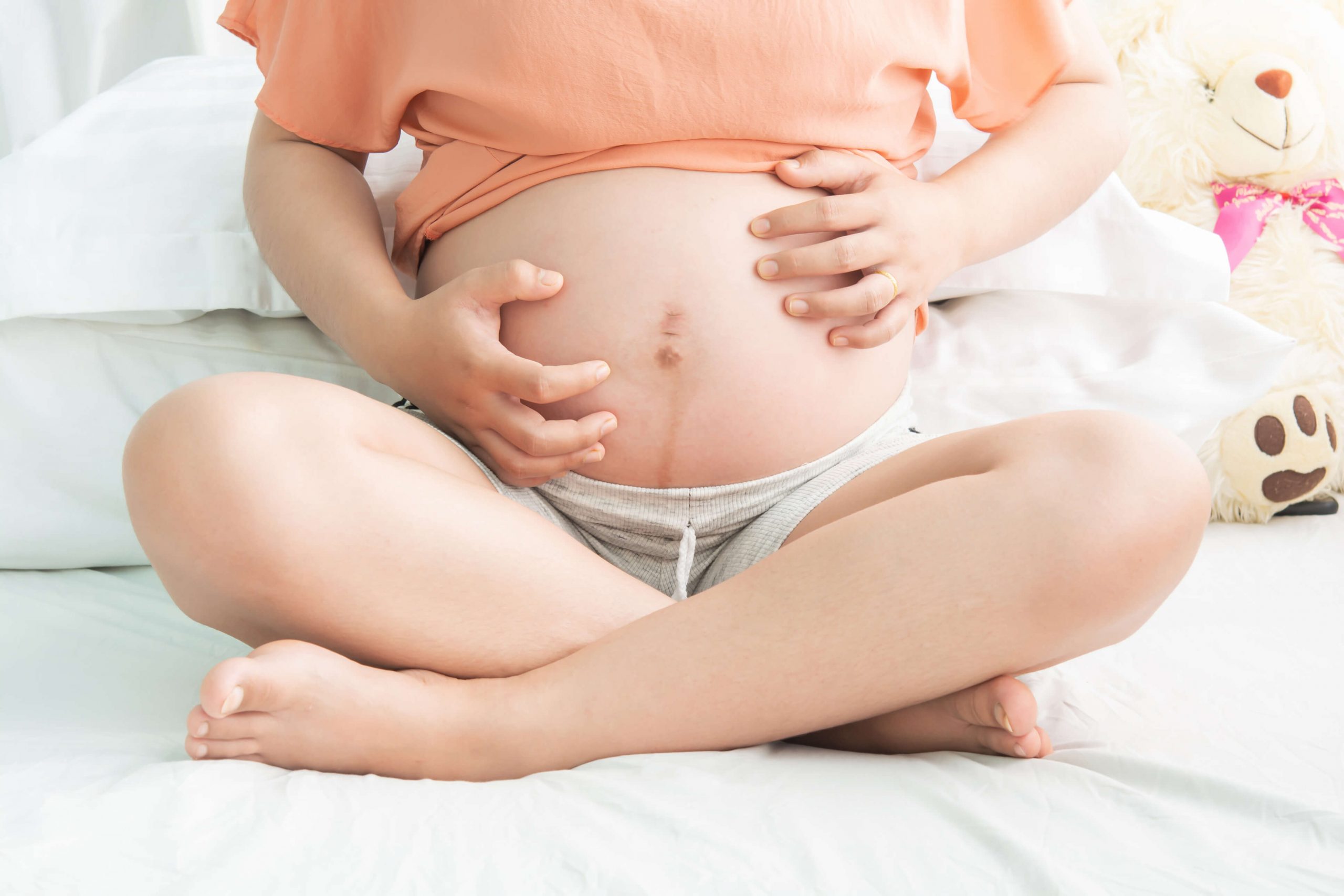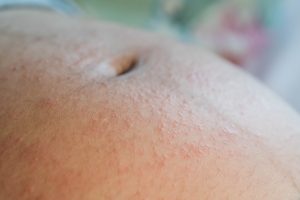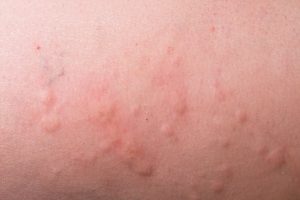
Pregnancy rashes are itchy, red patches of skin caused by physical and/or hormonal changes in the body during pregnancy. Pregnancy rashes can occur anywhere on the body, and they may vary in appearance, severity and duration.
Most rashes are harmless or benign, posing a minimal threat to you and your baby. However, others may be a symptom of an underlying medical condition that requires treatment. Knowing the signs and types of pregnancy rashes is essential for proper and effective treatment.
Many types of pregnancy rashes may develop during different stages of pregnancy.
Some of the most common types of pregnancy rashes include:

A heat rash is an itchy, red patch of small blisters on the skin that can appear anywhere on the body. They are generally harmless and clear within a few days.
Pregnancy can cause you to feel unusually warm due to an increased blood supply to the skin and a rise in body temperature. As such, you are more likely to sweat more and develop heat rashes.

Hives are raised bumps that develop alone or in clusters of red patches and can appear anywhere on the body. They are typically itchy and may have a burning or stinging sensation. Causes of hives are usually unknown but can be triggered by:
Pruritic urticarial papules and plaques of pregnancy (PUPPP) is a rash that causes itchy red patches with small bumps, commonly appearing on the stomach, especially near stretch marks. They may also spread to the arms, legs or buttocks.
A PUPPP rash develops when the skin stretches due to pregnancy, damaging the tissue layers underneath, resulting in inflammation. It typically occurs in the third trimester of pregnancy and may fade away after giving birth. This pregnancy-related skin condition is common and harmless to both mothers and babies.
Prurigo of pregnancy causes crusty or flaky bumps on the abdomen, legs or arms. It is a form of eczema in pregnancy. It is not uncommon for pregnant ladies to have eczema even though there is no pre-existing history of atopic skin condition. These rashes may develop anytime during pregnancy and may last for weeks or months even after delivery. Prurigo of pregnancy may be uncomfortable, but they generally do not pose any significant harm to you or your fetus.
The exact cause of prurigo of pregnancy is unknown, but many experts believe that changes in the immune system during pregnancy may play a significant role.
Intrahepatic cholestasis of pregnancy (ICP) or obstetric cholestasis (OC) causes severe itching over the entire body, starting from the palms of the hands and the soles of the feet. The itching may occur with or without a rash. Additionally, there may be yellowing of the skin or eyes, also known as jaundice.
ICP typically develops during the third trimester of pregnancy and is a sign of a potentially serious liver condition caused by hormones. While ICP may resolve after delivery, it is still vital to see a doctor for treatment as ICP may cause pregnancy complications, placing the fetus at risk. Fortunately, this condition is very rare.
Pemphigoid gestationis, also known as herpes gestationis, is a rare autoimmune skin condition that typically occurs during the second or third trimesters of pregnancy. It causes a hive-like rash that appears around the navel (belly button) and stomach, which can spread to other parts of the body. There may also be blisters or small bumps on the rash.
An autoimmune disease occurs when the immune system’s antibodies mistakenly attack the body cells. Pemphigoid gestationis usually resolves during the later stages of pregnancy but may flare up before delivery. However, changes in the menstrual cycle may trigger the rash to return even after pregnancy.
Pruritic folliculitis is a rare skin condition that causes pus-containing lesions (similar to acne) on the torso that may spread to other parts of the body.
The cause of pruritic folliculitis is unknown, and it is generally harmless.
Several tests can be performed to diagnose pregnancy rashes, including the following:
Pregnancy rashes treatment options involve improving symptoms and providing relief to the skin.
Depending on the type and severity of the pregnancy rashes, one or more of the following treatment options may be used:
Most pregnancy rashes can be treated using medications, either taken orally or applied topically (directly onto the affected skin).
Some of the common medications used to treat pregnancy rashes include:
Mild pregnancy rashes such as heat rash or hives can be easily treated using home remedies. These simple treatment methods help to improve symptoms and ease itching.
Some of these home remedies are:
Pregnancy rashes, especially heat rash, eczema like prurigo of pregnancy, PUPPP and hives, are common during pregnancy. However, they are generally not a significant cause for concern as they are mostly harmless and will fade away with time.
Most pregnancy rashes can be treated using prescription medications or simple home remedies to reduce symptoms.
Please see a dermatologist if your symptoms are not better with home remedies like moisturisers or if you have a blistering rash.
Gleneagles Medical Centre
6 Napier Road, #06-01
Singapore 258499
Clinic Hours:
Monday, Tuesday, Thursday & Friday
8am to 1pm
2pm to 5pm
Wednesday and Saturday
8am to 12pm
Contact Information
T: +65 6254 6646
F: +65 6259 9853